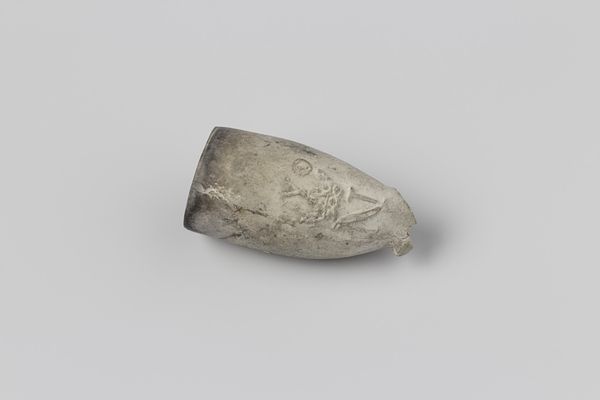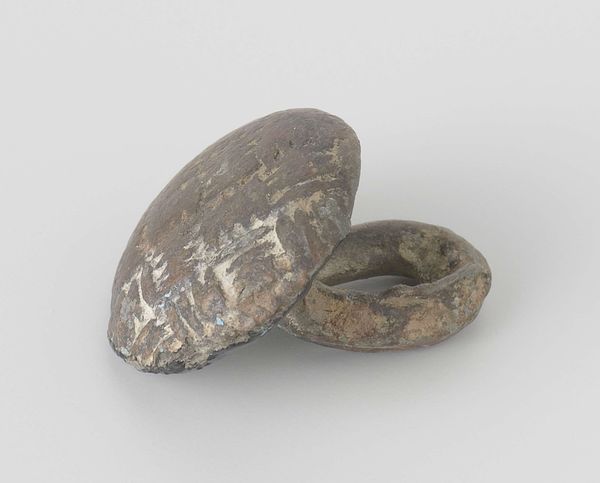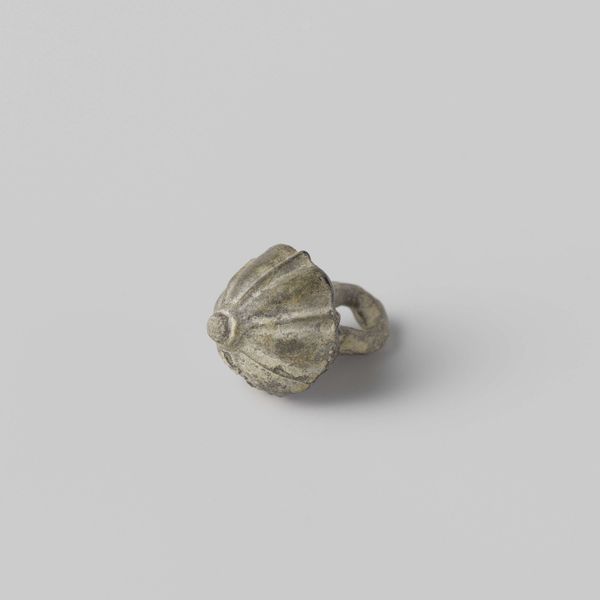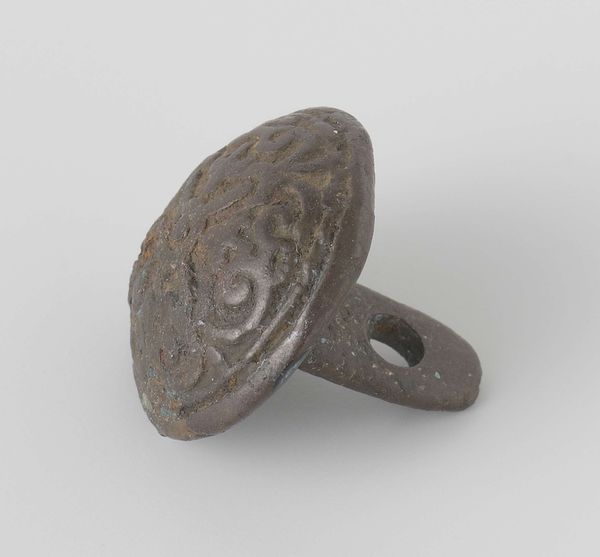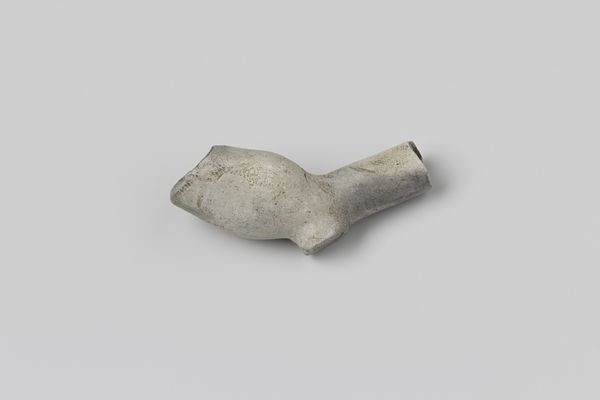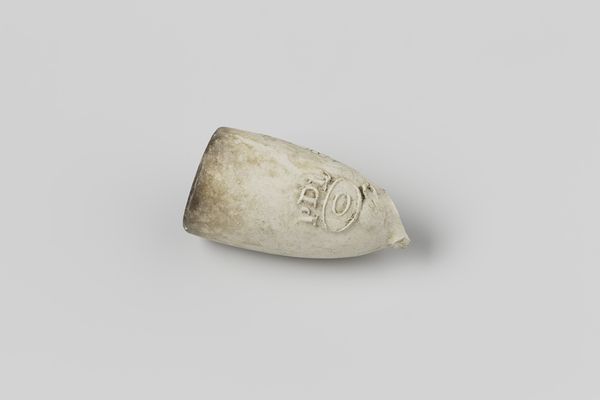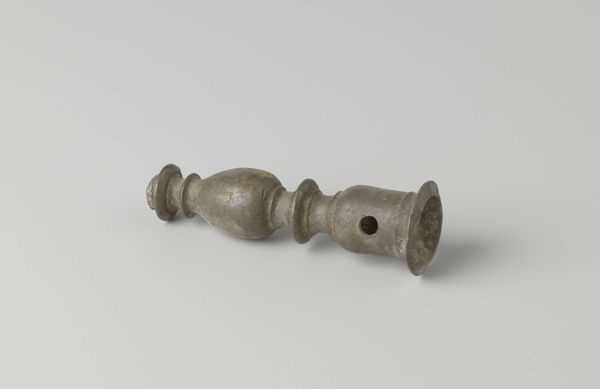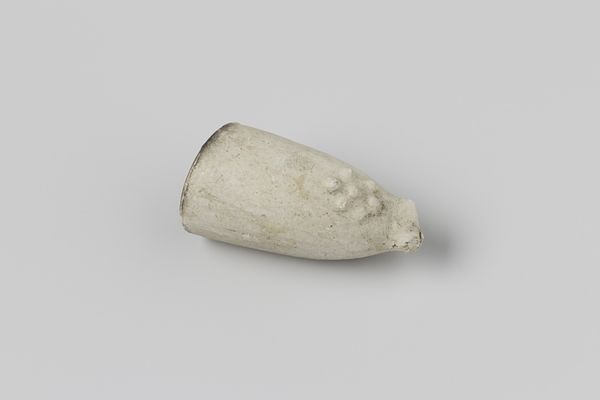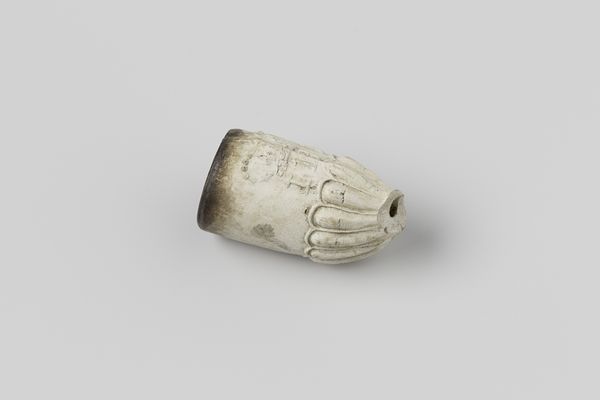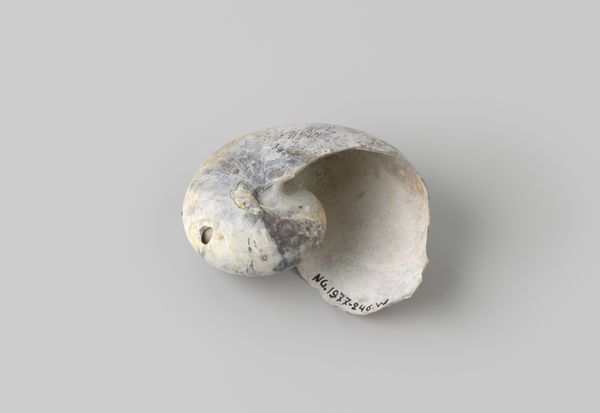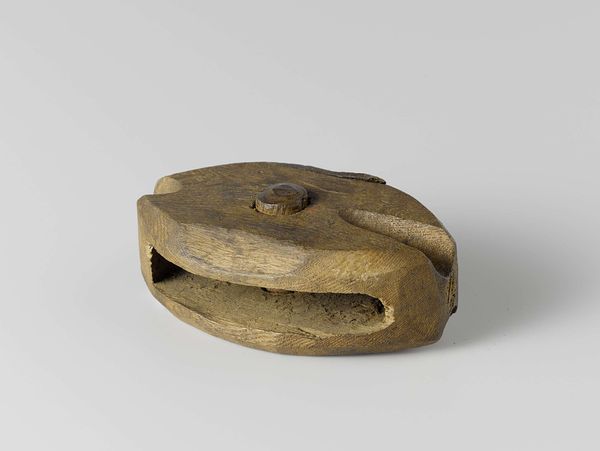
ornament, metal, sculpture
#
ornament
#
metal
#
form
#
11_renaissance
#
sculpture
Dimensions: height 1.8 cm, diameter 1 cm
Copyright: Rijks Museum: Open Domain
Curator: This intriguing little piece is titled "Knoop, konisch met ribben en bladvormig oog," or "Knob, conical with ribs and leaf-shaped eye" from around 1590-1596, attributed to an anonymous artist. It resides here at the Rijksmuseum. Editor: My first impression is of something surprisingly sturdy, a relic perhaps? The texture and metallic sheen make it feel grounded, almost like a building’s discarded adornment. Curator: It does have an architectural quality. This is very much a product of the late Renaissance, during a time when intricate details and ornamentation signified status and wealth. It reflects an impulse to adorn even the most functional objects. Editor: Absolutely, but look closely at how it was crafted. The metal appears almost molded, you can practically feel the maker's hands shaping the material, using rudimentary techniques. What exactly was this metal? Curator: Probably some sort of brass or bronze alloy given the color and time period, typical material for ornamental hardware at the time. These were likely mass-produced through casting. Such methods, while advanced for the time, do signify a departure from uniquely handcrafted objects. It certainly indicates a societal shift in the perception and accessibility of ornate design. Editor: I see the ribbed design suggesting leaves around what’s described as the ‘eye’. To me, the artistry lies in adapting such details to functional elements and reflecting an emergent mode of standardized production. Curator: The botanical motif aligns with the renewed interest in naturalism prevalent during the Renaissance, a departure from the heavily stylized ornamentation of the medieval period. Ornamentation was very much aligned with societal ideals. Editor: Yes, a sign of changing social sensibilities. By bringing natural forms into everyday hardware like this, one could argue this object embodies a material translation of Renaissance ideals into public material culture. It’s quite powerful to observe, even in an apparently insignificant object. Curator: I agree. This little knob invites us to ponder the evolving relationship between craftsmanship, societal values, and the quiet revolution taking shape in metal workshops of the 16th century. Editor: It is remarkable to find those profound echoes within the ridges of such an object.
Comments
No comments
Be the first to comment and join the conversation on the ultimate creative platform.


